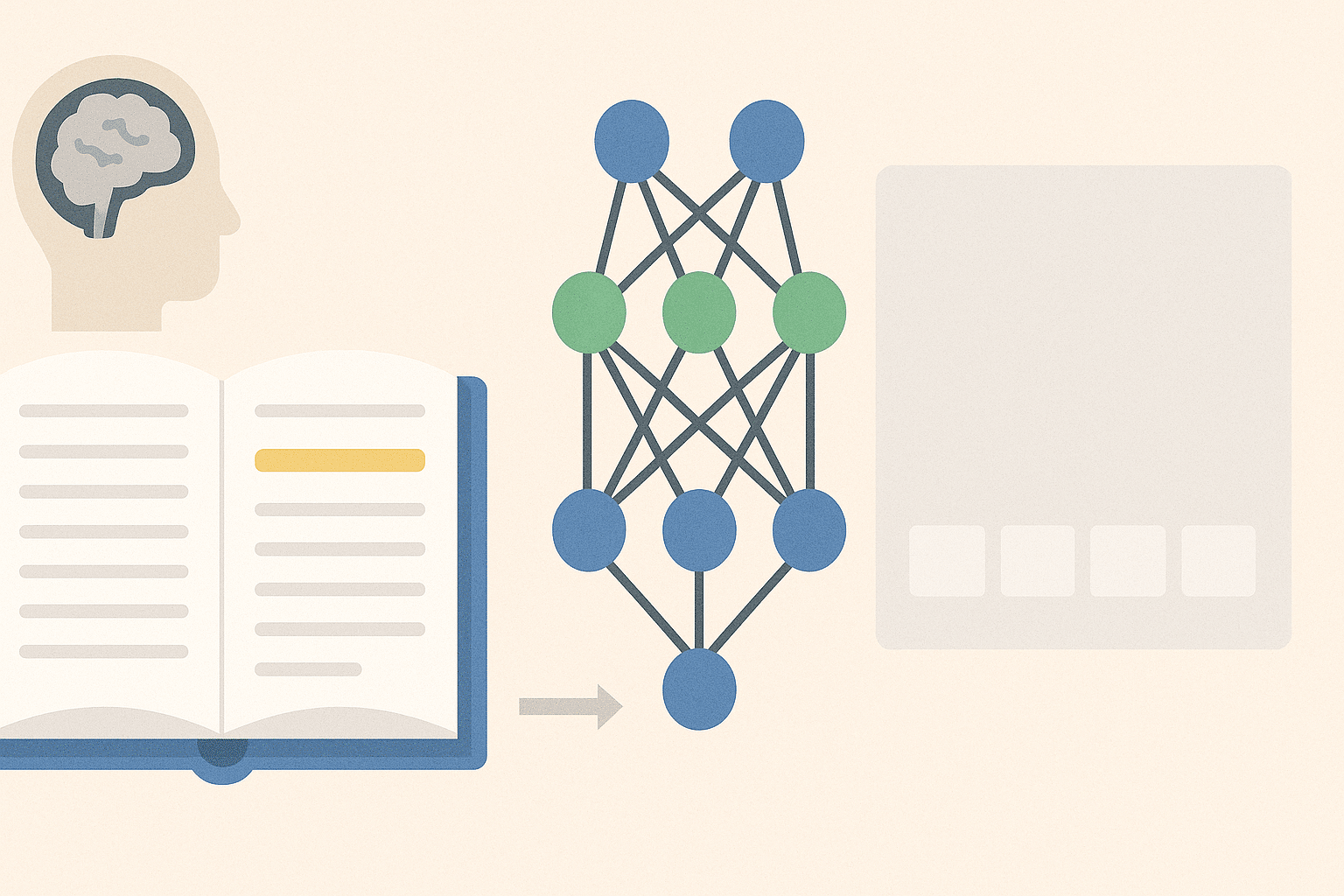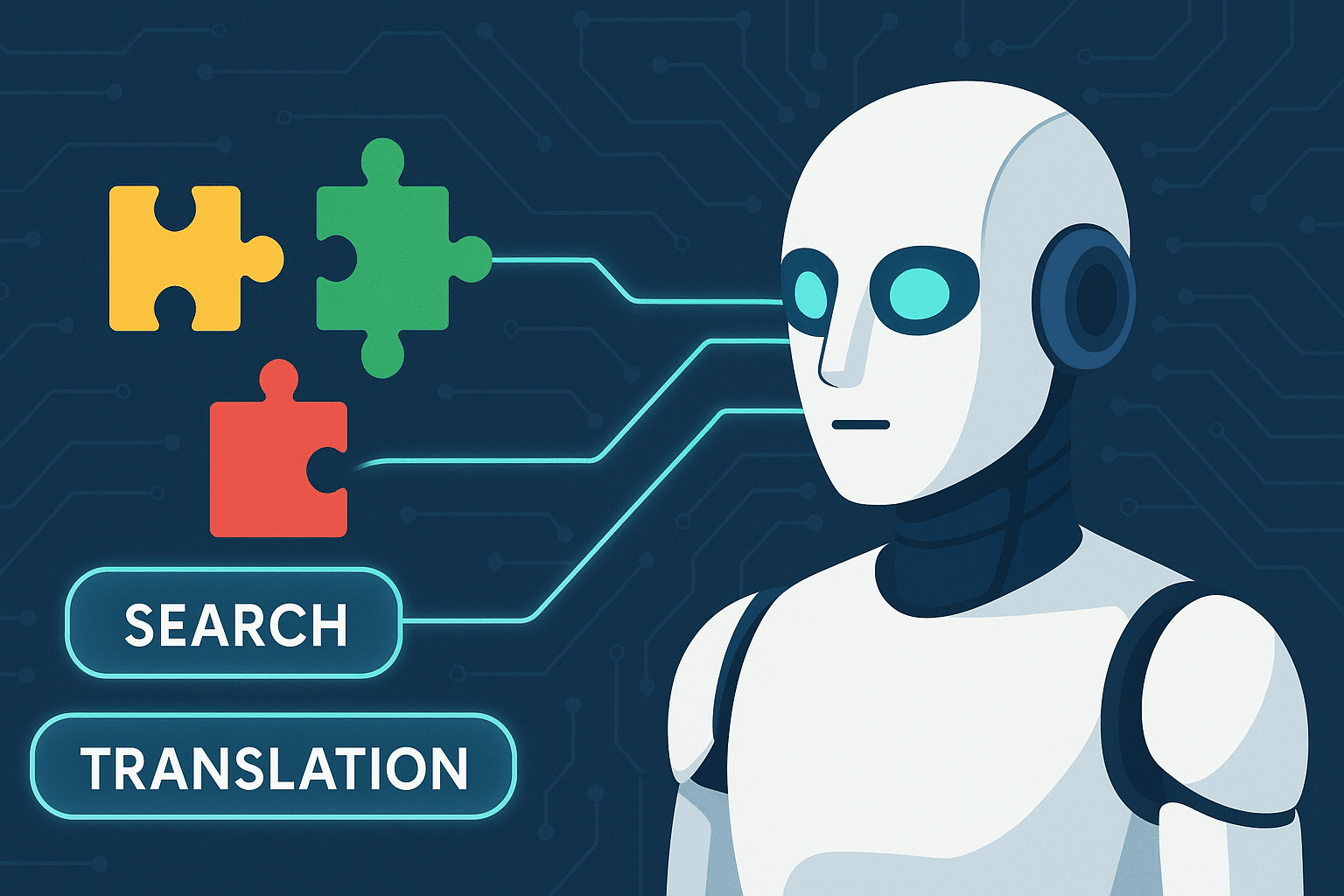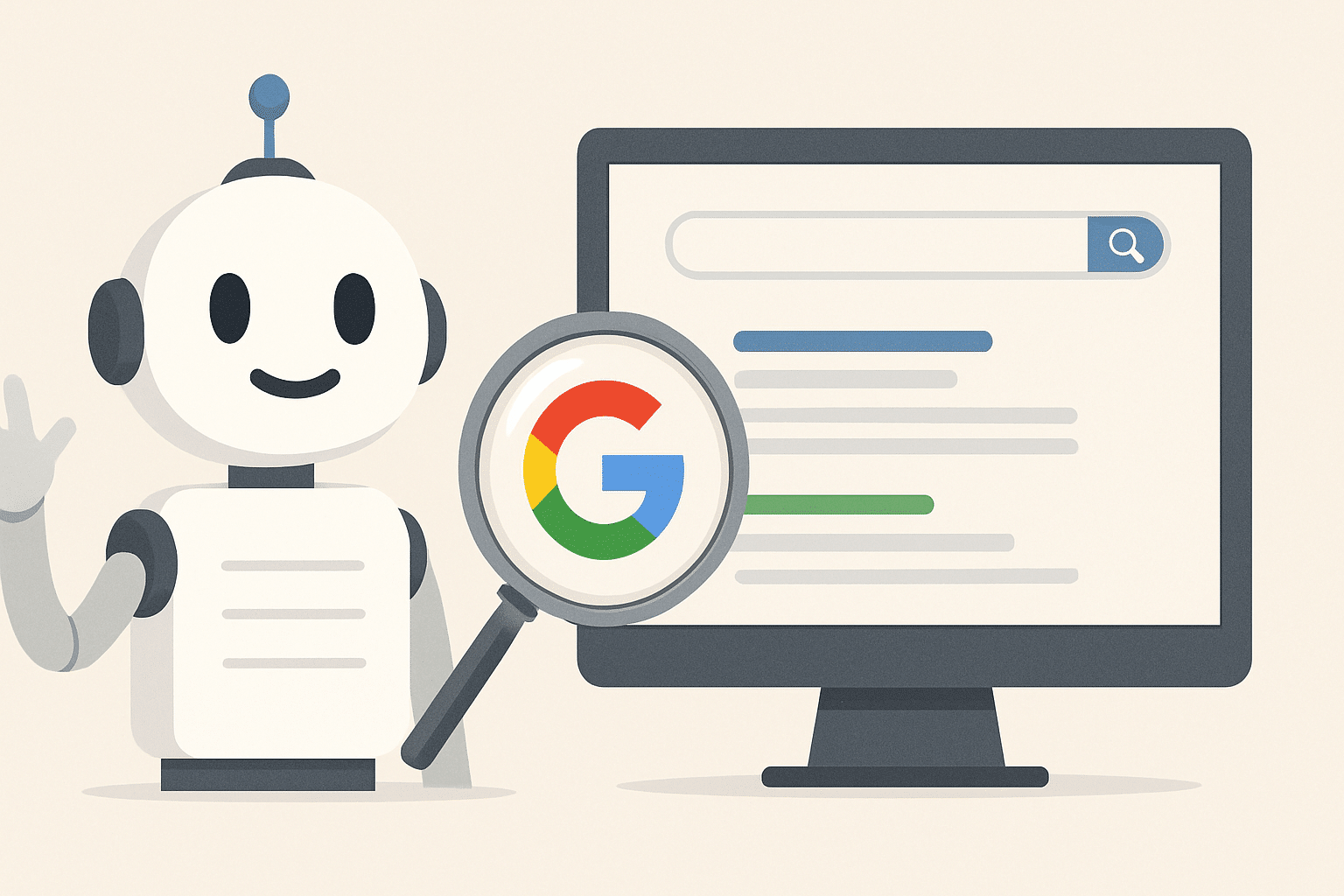Google BERT is a transformer-based model built for natural language processing. It was introduced in 2018 by researchers at Google AI. The key idea behind BERT is its bidirectional training method, which reads words both from left and right at the same time. This lets the model understand word meaning based on full context.
The name BERT stands for Bidirectional Encoder Representations from Transformers. It improved many NLP tasks like question answering, sentence classification, and more. In late 2018, Google made BERT open source, allowing other researchers to use and fine-tune it.
In October 2019, Google added BERT to its search engine algorithm. This helped Google Search understand user queries more like how people speak. Experts called this one of the biggest changes to Google Search in recent years. BERT later became a base model for many other AI tools that deal with human language.
How Google BERT was created and trained
Google BERT was made to fix a big problem in older language tools. Those tools read only one way and missed the full meaning of sentences. BERT changed that by reading both sides of every word at once.
One-directional limits in earlier NLP models
Before Google BERT, most natural language models read text in only one direction. For example, OpenAI’s GPT processed sentences from left to right. Some older systems tried combining two one-way passes, but they still could not fully capture the true context of a word in the middle of a sentence.
Models like ELMo were shallowly bidirectional, meaning they looked both ways but only on the surface. GPT stayed fully one-directional. These methods lacked the depth needed for strong contextual understanding.
Google’s approach and open-source release
To fix this, researchers at Google AI Language, including Jacob Devlin, introduced a model that reads in both directions at once. This method is called deep bidirectional training. It allows BERT to understand a word by looking at the entire sentence, not just the words before or after.
Google published the first BERT research paper in October 2018, followed by the open-source code in November. This release let anyone fine-tune BERT for tasks like sentence classification, search queries, and question answering. It gave global access to state-of-the-art NLP tools.
Use of Transformer and encoder-only design
BERT’s full name is Bidirectional Encoder Representations from Transformers. It is based on the Transformer architecture, also developed by Google in 2017. The key idea in a Transformer is self-attention. This allows each word in a sentence to weigh all other words to decide what matters most.
Unlike models used for language generation, BERT only uses the encoder stack of the Transformer. It does not include the decoder, because BERT’s focus is not on creating text but on understanding meaning.
The deeply bidirectional encoder lets BERT look at both sides of every word at every layer. This sets it apart from earlier systems. It was the first model to truly capture full sentence context, and it became a turning point in natural language processing.
How the BERT model works and learns

BERT is built like a smart reader that looks at every word in a sentence all at once. It was trained on a huge amount of text and can be quickly adapted to solve many different language tasks.
Transformer-based design
Google BERT is built on the Transformer encoder architecture, which uses self-attention to understand how words relate to each other. BERT reads the full sentence at once, not word by word. This helps it catch the exact meaning of a word based on the words around it.
Two sizes of BERT were released:
- BERT_BASE: 12 layers, 12 attention heads, 110 million parameters
- BERT_LARGE: 24 layers, 16 attention heads, about 340 million parameters
In both, the model creates contextual embeddings for each word. For example, if the word is bank, BERT uses both the left and right context to check if it means a river bank or a financial bank. This bidirectional context modeling gives BERT more accurate understanding than earlier one-way models.
Pre-training tasks
To teach itself language, BERT uses two tasks during training:
- Masked Language Modeling (MLM): Here, some words are hidden or “masked.” BERT learns to guess the missing words using the other words around them. This trains the model to understand both left and right context deeply.
- Next Sentence Prediction (NSP): BERT sees two sentences and learns to tell if the second one naturally follows the first. This task helps BERT learn sentence flow and paragraph coherence.
These two self-supervised tasks help BERT build a strong base in language understanding. Once trained, the model can be easily adapted to different NLP tasks like text classification or question answering.
Training data and computing setup
BERT was trained on a massive dataset:
- English Wikipedia: Over 2.5 billion words (after removing lists and tables)
- Toronto BookCorpus: 800 million words from fiction and story books
In total, about 3.3 billion words were used to train BERT. This wide training base helped BERT learn both everyday patterns and rare sentence structures. Google used Cloud TPUs (Tensor Processing Units), with 64 TPU chips running for several days to train the full model.
Fine-tuning and transfer learning
After pre-training, BERT becomes a foundation model. Users can add a small output layer for any specific task like sentiment analysis or question answering. This is called fine-tuning, and it takes only a few training steps to get strong results.
Earlier, models were built from scratch for each task. BERT changed this. It helped make transfer learning the new normal in NLP. Instead of starting fresh, developers now start with a pre-trained model like BERT and fine-tune it for their needs. This saves time and gives better results with less data.
How Google uses BERT in Search
BERT became a game changer for language tools. It scored better than earlier models in many tests and helped machines understand language more like people do. Many new and smaller models were later built using BERT’s ideas.
Breakthrough results on major benchmarks
When Google BERT was released, it set new records on several NLP benchmarks. On the GLUE benchmark (General Language Understanding Evaluation), which includes nine different language tasks, BERT raised the top score to 80.5, beating the earlier best by 7.7 points. These gains were large, as most progress on GLUE was usually measured in fractions.
In answering the question, BERT also led the field. On SQuAD v1.1, BERT_LARGE scored 93.2 F1, ahead of the human baseline of 91.2 and the previous best of 91.6. On the tougher SQuAD v2.0, BERT scored 83.1, which was over 5 points better than older models.
BERT also did well on tasks like natural language inference, scoring 86.7% accuracy on MultiNLI, and in named entity recognition. What made this more notable was that BERT used the same model architecture for all tasks. There was no custom setup or special feature work for each benchmark. Just fine-tuning was enough.
Rise of BERT as the default base model
By the end of 2019, BERT became a standard starting point in NLP research. Most labs and developers began using BERT as the baseline model for tasks like sentiment analysis, text matching, and coreference resolution.
A new wave of studies followed, focused on understanding how BERT works. This area became known as BERTology. Research explored how BERT handles syntax, word meanings (polysemy), and how it manages to generalize so well. Although BERT’s behavior was complex, it was clear the model captured deep semantic and syntactic features.
Derivatives and smaller versions
BERT’s success led to several improved and smaller models:
- RoBERTa: Trained by Facebook AI with more data and without the NSP task. It achieved better scores on many benchmarks.
- ALBERT: A lighter model by Google and TTI that used fewer parameters by weight sharing and factorized embeddings.
- BERT_Tiny: Released by Google in 2020 as one of 24 compact BERT models, designed for devices with limited power. The smallest had only 4 million parameters.
- DistilBERT: A compressed model from Hugging Face, 40% smaller and 60% faster than BERT, while still keeping over 95% of its performance.
These versions made it easier to use BERT in real-world apps, especially where speed or memory mattered.
Multilingual and cross-lingual impact
BERT also went multilingual. Google trained Multilingual BERT (mBERT) on Wikipedia texts from 104 languages in one model. This version could handle tasks in many languages, including those not directly fine-tuned. This helped with low-resource languages and cross-lingual transfer learning.
Other language-specific BERTs were created later, such as versions for Chinese, French, and others. This growth in BERT models across regions and languages made BERT the reference architecture in NLP, much like convolutional networks in computer vision.
How Google uses BERT in Search
Google started using BERT to better understand what people really mean when they search. It helps the search engine read full sentences and give more helpful answers, especially for long or tricky questions with small important words.
Launch and early deployment
In October 2019, Google announced that it had started using BERT models in Google Search. The goal was to improve how the search engine understands natural-language queries. This change was called the biggest leap in five years for search quality.
At first, BERT was used only for English queries in the US, covering about 10 percent of all searches. It was especially useful for long or conversational queries, where meaning depends on small words like to or for. Unlike older systems that focused on keywords, BERT looked at the full context of each word to figure out what the user really meant.
Real examples of improved query understanding
Google gave examples to show how BERT helped.
- A search for “2019 brazil traveler to usa need a visa” used to give results about Americans going to Brazil. After BERT, the system understood that the user meant a Brazilian going to the US.
- Another search, “can you get medicine for someone at the pharmacy”, was tricky. Older systems matched just “medicine” and “pharmacy”. BERT understood the full intent—someone asking if they can pick up medicine on another person’s behalf.
This level of contextual understanding made the search results more relevant, especially for natural-language questions and voice queries.
Expansion to other languages and regions
After the initial release, Google expanded BERT to many other languages. By the end of 2019, it was active in dozens of languages, including Spanish, Hindi, and Korean. In a 2022 update, Google confirmed that BERT now helps interpret almost every English query.
BERT became a core part of the search ranking system, working alongside tools like RankBrain and neural matching. It does not replace them but adds a deeper understanding of how people speak and write.
SEO and content impact
From an SEO viewpoint, the BERT update was important but not something that could be directly optimized for. Google made it clear that there is no trick or setting for “BERT SEO”. The best way to match the update was still the same: write clearly, naturally, and helpfully.
Danny Sullivan, Google’s public liaison, explained that BERT is not a ranking factor. Instead, it is a tool to understand language better. This means BERT is used to match queries to pages, not to reward or punish sites.
Long-term role in search
BERT’s influence was strongest on long-tail queries and voice searches, which rely more on full sentence meaning. Most websites did not see large ranking shifts, but the update helped match specific content to complex questions more accurately.
Google later built even more powerful language systems, such as MUM (2021), but confirmed that BERT still plays a critical role in Google Search. It continues to help users find better results from everyday language.
How Google BERT changed AI and language processing

BERT changed how computers understand language. It became the base for many new models and tools, helped make search and translation better, and showed that reading words in both directions gives a much clearer meaning.
Shift to pre-trained transformer models
Google BERT changed the way machines understand language. It made pre-trained transformer models the main choice for solving language understanding tasks. After BERT, the method of pre-train and fine-tune became the new standard. First, a model is trained on large sets of general text. Then, it is fine-tuned for a specific job, like answering questions or sorting text.
BERT was one of the first true foundation models in artificial intelligence. These are large models trained on broad data that can be adapted to many tasks. It helped lead to the creation of the BERT family—models based on BERT or inspired by its structure.
This family includes:
- RoBERTa and ALBERT, which improve or shrink the original design
- Domain-specific BERTs, made for special topics like medical or legal text
- Multilingual BERTs, used in many languages
Within a year of BERT’s release, other major models appeared, such as XLNet, ERNIE, and T5. These added new ideas like text generation or alternative training goals, but all built on what BERT started. Researchers began calling this fast growth the post-BERT era, marked by bigger models and smarter training methods.
Ongoing research into how BERT works
BERT also sparked new questions in research. Experts started exploring how deep models like BERT actually work inside. This included:
- How BERT learns syntax and grammar
- How it handles coreference resolution (tracking who is who in a sentence)
- Why it still struggles with some types of questions
Studies found that BERT’s attention heads sometimes match grammar patterns or text links across sentences. But large models are still hard to fully understand. Figuring out how they work remains a major challenge.
Impact on real-world applications
BERT did not stay in research labs. It was used in real products:
- Google Translate improved its sentence understanding
- Gmail’s Smart Compose became better at suggesting text
- Google Search started handling billions of daily queries with more accuracy
BERT’s ideas also helped build newer models like GPT-3, LaMDA, and MUM. These later systems use transformers and pre-training, but often focus on text generation or cover broader tasks at a much larger scale.
Continued use in industry and research
Even as new models arrive, BERT remains widely used. Its design is still a base for many modern systems in both research and business. The way it reads both forward and backward to understand context is now seen as a core idea in natural language processing.
BERT proved that giving machines better tools to read deeply can make a real difference. It set a new direction in language AI, and its influence is still growing.
References
- https://research.google/blog/open-sourcing-bert-state-of-the-art-pre-training-for-natural-language-processing/
- https://ar5iv.labs.arxiv.org/html/1810.04805
- https://huggingface.co/blog/bert-101
- https://en.wikipedia.org/wiki/BERT_(language_model)
- https://anwarvic.github.io/cross-lingual-lm/mBERT
- https://blog.google/products/search/search-language-understanding-bert/
- https://www.seroundtable.com/google-bert-no-optimization-28435.html
- https://www.infoq.com/news/2019/11/google-search-bert-nlp/
- https://blog.google/products/search/how-ai-powers-great-search-results/
- https://www.searchenginejournal.com/how-google-search-understands-human-language/436565/


